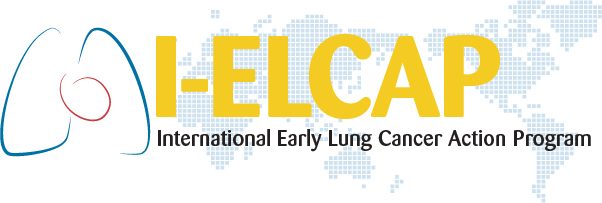Previous Meetings
The 2nd International Conference on Screening for Lung Cancer
Friday, February 25, 2000 to Sunday, February 27, 2000
Weill Medical College of Cornell University
New York, NY
United States
Agenda: 2nd Conference Agenda
Mission:
The conference mission is to further develop the international collaboration, to discuss the methodology by which we can integrate assessment of the latest advances in images and treatment, to identify the potential interventions for Stage IA lung cancer which should be evaluated, to begin to establish guidelines for the programmatic setting required for screening programs, and to determine the common data elements and methods of analysis for the pooled data. We also will compare the ELCAP study design to randomized controlled trials.
The lectures during the first day should emphasize new and emerging technologies. Workshops during the second day will explore different aspects of the collaborative efforts and the results of the workshops will be presented during the final day of the conference.
Consensus Statement:
Since the first conference held October 1-3, 1999, information about CT screening for lung cancer has continued to accrue. Presentations at the second conference covered: reports on interim conferences elsewhere; further data on experience with the screening; preliminary analyses indicating that CT screening can be quite cost-effective; a technical update on the capabilities of CT scanners; and current issues in the treatment of early-stage lung cancer. To date, seven centers throughout the world have performed large-scale screening studies on more than 20,000 people using the non-comparative design exemplified by the Early Lung Cancer Action Project (ELCAP). One advantage of this design is that it allows for concurrent assessment of modifications of the screening-diagnostic regimen and the early interventions. All participants felt that international collaboration was highly desirable, as it allows for pooling of data and thus results in more rapid accumulation of the knowledge-base of early detection of lung cancer, including its cost-effectiveness and the impact of alternative approaches to early treatment.
It is now widely recognized that CT screening presents a breakthrough opportunity to save lives of lung cancer patients, and that it thus is important to rapidly assess the magnitude of its benefit so as to provide for its more timely and widespread availability to high-risk persons. The rate of refinement of CT imaging for early diagnosis of lung cancer is so rapid that today’s state-of-the-art CT will be obsolete within the next several years. Similarly, there is continuing development of new techniques of early diagnosis and treatment. Concern was voiced about a possible randomized controlled trial for lung cancer screening, in terms of both the time it would require and the high cost it would entail. The technology being evaluated by such a trial would be obsolete by the time of the trial’s completion, and its high cost would not allow funds to be available for assessment of important innovations in early diagnosis and treatment of lung cancer, possibly supplemented by promising approaches to chemoprevention of second primaries.
At the conference, experts presented exciting visions of potential innovations in screening tests and further diagnostics and examined interventions on early stage lung cancer with a view to their optimization in association with screening. They identified the critical diagnostic and interventive questions which could be answered in the near term within the framework of collaborative programs. A strong consensus was voiced that future meetings were needed for further development of such collaboration and that funding sources needed to be identified. The participants, including the advocacy groups, strongly felt that tobacco industry resources and existing settlements would be appropriate sources to help support the development of such collaboration as this would be of direct benefit to current smokers and former smokers. The patient advocates at the meeting trenchantly pointed out that smokers continue to pay the bulk of tobacco settlements, but are not receiving direct benefits from these resources by the exciting opportunity that now exists for improved survival through early detection and early intervention of lung cancer. The participants strongly believe that tobacco industry resources, including the existing settlements must support the development and application of these new technologies to provide an opportunity for cure.
In respect to practice of CT screening, the need for quality control and documentation of the entire regimen and outcomes was emphasized, inclusive of the screening test and subsequent diagnostics together with their findings, intervention, and long-term follow-up. A strong recommendation was made that screening should be done by centers committed to providing the full range of relevant interdisciplinary support (either directly or through collaboration) for the management of each screen-identified case, including the participation of a multi-disciplinary group with expertise in lung cancer. It was concluded that future meetings were needed to rapidly implement the desired collaboration and quality-control guidelines.
